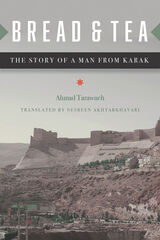
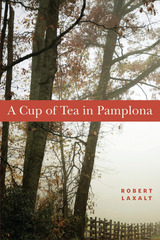
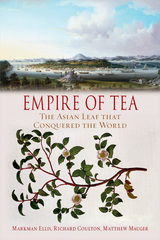
This impressively detailed book offers a rich cultural history of tea, from its ancient origins in China to its spread around the world. The authors recount tea’s arrival in London and follow its increasing salability and import via the East India Company throughout the eighteenth century, inaugurating the first regular exchange—both commercial and cultural—between China and Britain. They look at European scientists’ struggles to understand tea’s history and medicinal properties, and they recount the ways its delicate flavor and exotic preparation have enchanted poets and artists. Exploring everything from its everyday use in social settings to the political and economic controversies it has stirred—such as the Boston Tea Party and the First Opium War—they offer a multilayered look at what was ultimately an imperial industry, a collusion—and often clash—between the world’s greatest powers over control of a simple beverage that has become an enduring pastime.
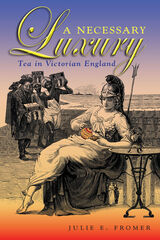
Tea drinking in Victorian England was a pervasive activity that, when seen through the lens of a century’s perspective, presents a unique overview of Victorian culture. Tea was a necessity and a luxury; it was seen as masculine as well as feminine; it symbolized the exotic and the domestic; and it represented both moderation and excess. Tea was flexible enough to accommodate and to mark subtle differences in social status, to mediate these differences between individuals, and to serve as a shared cultural symbol within England.
In A Necessary Luxury: Tea in Victorian England, Julie E. Fromer analyzes tea histories, advertisements, and nine Victorian novels, including Alice’s Adventures in Wonderland, Wuthering Heights, and Portrait of a Lady. Fromer demonstrates how tea functions within the literature as an arbiter of taste and middle-class respectability, aiding in the determination of class status and moral position. She reveals the way in which social identity and character are inextricably connected in Victorian ideology as seen through the ritual of tea.
Drawing from the fields of literary studies, cultural studies, history, and anthropology, A Necessary Luxury offers in-depth analysis of both visual and textual representations of the commodity and the ritual that was tea in nineteenth-century England.
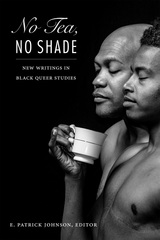

Tea growing was a prosperous industry in Sichuan when Wang Anshi's New Policies created a Tea Market Agency to buy up Sichuanese tea and trade it to Tibetan tribesmen for cavalry horses. At first the highly autonomous Agency not only acquired the needed horses but made a profit. After the Jurchen conquest of North China, however, market realities changed and the combined Tea and Horse Agency's once successful policies ruined tea farmers, failed to meet quotas for horses, and ran a deficit. Smith details the workings of Sichuan tea farming and the tea trade, examines the geopolitical factors that forced the Song to buy horses, and graphically describes the difficulties of driving them more than a thousand miles through rugged mountains with only inexperienced conscripts as trail hands.
In this study of fiscal sociology, Smith also explains how the Tea and Horse Agency transformed the Sichuan local elite, which was notorious for its resistance to state power, into imperial civil servants eager to tax their own region. He draws on modern theories of corporate behavior to explain what made the inner workings of the Agency an extraordinary departure for the Chinese civil service; and he demonstrates how the Agency put into practice the most radical New-Policies theories of state economic activism. The Agency made entrepreneurs out of bureaucrats, but ultimately became ruinously tyrannical as the system of state rewards and punishments drove its personnel to actions that crippled key sectors of the economy.

From chai to oolong to sencha, tea is one of the world’s most popular beverages. Perhaps that is because it is a unique and adaptable drink, consumed in many different varieties by cultures across the globe and in many different settings, from the intricate traditions of Japanese teahouses to the elegant tearooms of Britain to the verandas of the deep South.
In Tea food historianHelen Saberi explores this rich and fascinating history. Saberi looks at the economic and social uses of tea, such as its use as a currency during the Tang Dynasty and 1913 creation of a tea dance called “Thé Dansant” that combined tea and tango. Saberi also explores where and how tea is grown around the world and how customs and traditions surrounding the beverage have evolved from its legendary origins to its present-day popularity.
Featuring vivid images of teacups, plants, tearooms, and teahouses as well as recipes for both drinking tea and using it as a flavoring, Tea will engage the senses while providing a history of tea and its uses.
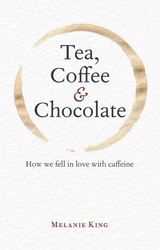
In her mouthwatering new book, Melanie King offers a concise cultural history. All three beverages hail from faraway places: tea came first from China, coffee from the Middle East, and chocolate from Central America. Physicians and politicians alike were quick to comment in newspapers and popular periodicals on their supposed perils or health benefits. Readers learn that coffee was recommended in the seventeenth century as protection against the bubonic plague. Tea was thought to make women unattractive and men “unfit to do their business,” while a cup of chocolate was supposed to have exactly the opposite effect on the drinker’s sex life and physical appearance. As consumption of these newly discovered delicacies grew, merchants seized on the opportunity by setting up coffee houses or encouraging ever-more-elaborate tea-drinking rituals.
Filled with fascinating and often funny anecdotes—from a goatherd whose flock became frisky after eating coffee berries to a duchess with a goblet of poisoned chocolate, Tea, Coffee & Chocolate shows how the rowdy initial reception of these drinks forms the roots of today’s enduring caffeine culture.
READERS
Browse our collection.
PUBLISHERS
See BiblioVault's publisher services.
STUDENT SERVICES
Files for college accessibility offices.
UChicago Accessibility Resources
home | accessibility | search | about | contact us
BiblioVault ® 2001 - 2024
The University of Chicago Press









